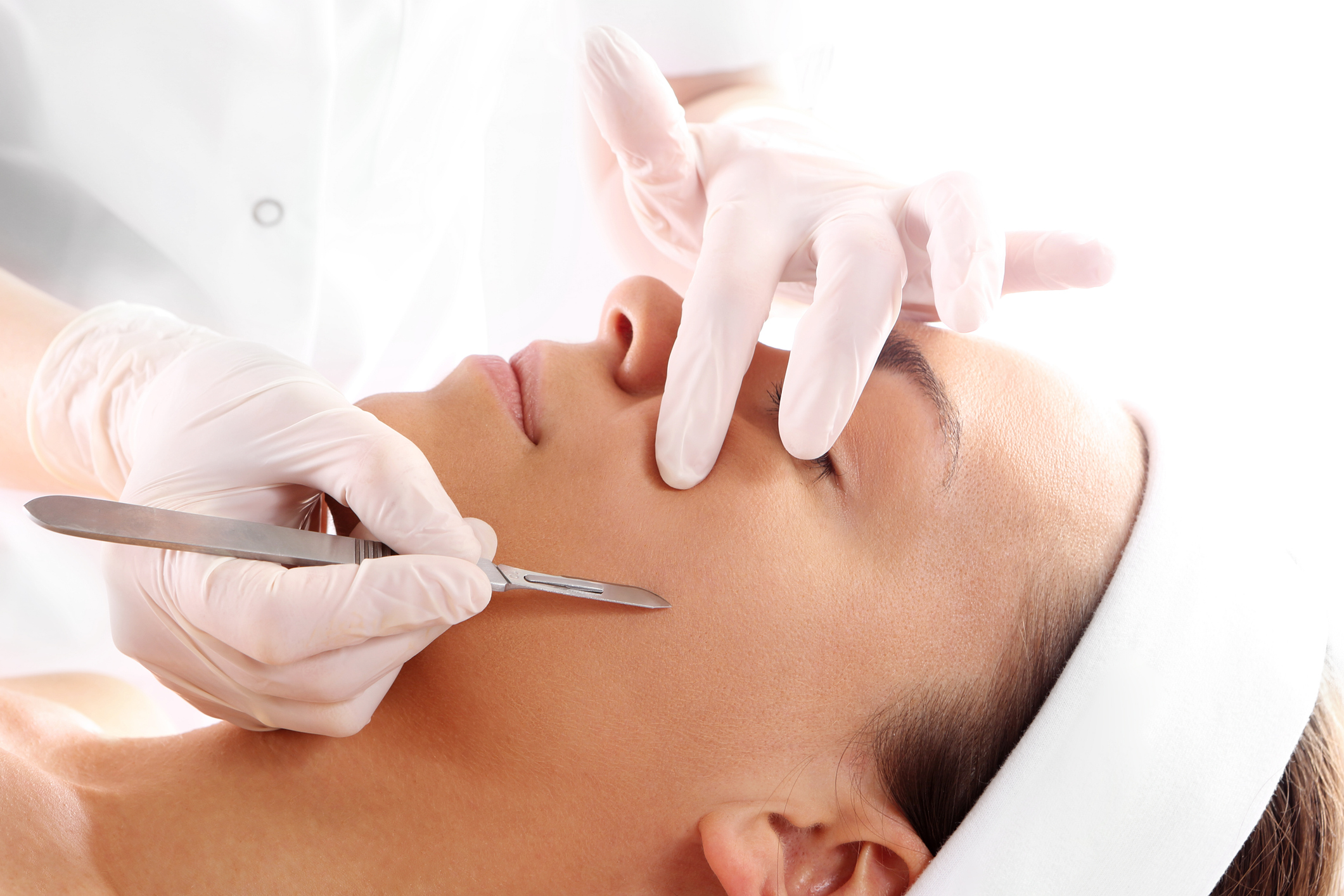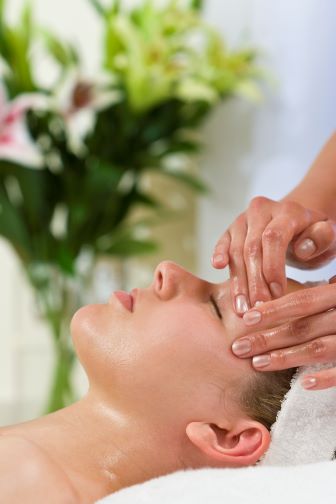
Dermaplaning Offered by the Skincare Company Spa & Salon
Dermaplaning
The dermaplaning procedure is typically conducted in a sterile environment to ensure safety and efficacy. It begins with cleansing the skin, often using alpha- or beta-hydroxy acid to prepare the surface. A pre-treatment solution may be applied to enhance the process. The professional then uses a sterile surgical blade, held at a 45-degree angle, to perform feathering strokes across the skin, gently scraping off the top layers of dead skin cells and fine hairs. This step is meticulous, aiming to avoid incisions and ensure a smooth result. The procedure duration varies, typically taking 20-40 minutes for facial treatment. Post-treatment, hydrating serums, such as those containing ceramides or hyaluronic acid, or enzyme treatment masks are often applied to brighten, or soothe and nourish the skin.
Recovery is generally minimal, with no downtime required, making it convenient for those with busy schedules. However, minor side effects like redness and swelling may occur, subsiding within a week. Scabs may form and fall off after two weeks, and clients are advised to resume normal skincare routines after 1-2 weeks, with a recommendation to avoid sun exposure for 4 weeks to protect the newly exposed skin. The treatment can be repeated every 3-6 weeks to maintain benefits, with results lasting approximately 3 weeks or longer depending on the skin type, aligning with the skin’s natural renewal cycle.
Pros of Dermaplaning
Dermaplaning offers a range of potential benefits, supported by various sources, making it appealing for those seeking to improve skin appearance. Below is a detailed table summarizing the pros, categorized by skin health, convenience, and suitability:
Skin Health
Smooths and brightens skin by removing dead cells and peach fuzz.
Enhances absorption of skincare products, increasing their efficacy.
Reduces appearance of fine lines, wrinkles, and acne scars.
Eases hyperpigmentation and evens out skin tone for a uniform look.
Clears pores, removes bacteria, and limits breakouts, promoting clarity.
Convenience
Requires no downtime, allowing immediate return to daily activities.
Can be performed regularly, every 3-4 weeks, with benefits lasting ~3 or more weeks.
Suitability
Generally safe for most skin types, suitable for those without severe conditions like eczema, psoriasis, rosacea, or active acne.
Provides a smooth base for improved makeup application, enhancing cosmetic results.
Temporarily removes fine facial hair without affecting growth cycles, reducing dirt and oil trapping.
These pros highlight dermaplaning’s versatility, offering both aesthetic and functional benefits. It is particularly noted for its ability to reveal healthier, firmer skin, making it a favored choice for those looking to address multiple skin concerns simultaneously. However, it is important to note that while generally safe, individuals with severe skin conditions should consult a healthcare provider to ensure suitability, as the procedure may not be ideal for everyone.
The dermaplaning procedure is typically conducted in a sterile environment to ensure safety and efficacy. It begins with cleansing the skin, often using alpha- or beta-hydroxy acid to prepare the surface. A pre-treatment solution may be applied to enhance the process. The professional then uses a sterile surgical blade, held at a 45-degree angle, to perform feathering strokes across the skin, gently scraping off the top layers of dead skin cells and fine hairs. This step is meticulous, aiming to avoid incisions and ensure a smooth result. The procedure duration varies, typically taking 20-30 minutes for facial treatment and up to 1.5 hours for larger areas. Post-treatment, hydrating serums, such as those containing ceramides or hyaluronic acid, are often applied to soothe and nourish the skin.
Recovery is generally minimal, with no downtime required, making it convenient for those with busy schedules. However, minor side effects like redness and swelling may occur, subsiding within a week. Scabs may form and fall off after two weeks, and patients are advised to resume normal activities after 4-6 weeks, with a recommendation to avoid sun exposure for 6-12 months to protect the newly exposed skin. The treatment can be repeated every 3-4 weeks to maintain benefits, with results lasting approximately 3 weeks, aligning with the skin’s natural renewal cycle.
Dermaplaning Overview
Improves Skin Texture and Tone: By stimulating collagen production, dermaplaning helps smooth out fine lines, wrinkles, and uneven skin texture, giving your skin a more youthful and radiant appearance.
Reduces Scars and Stretch Marks: This treatment is effective in minimizing the appearance of acne scars, surgical scars, and stretch marks, making the skin look clearer and more even.
Enhances Product Absorption: The exfoliation created during the procedure allow for better absorption of skincare products, maximizing their effectiveness and delivering nutrients deeper into the skin.

